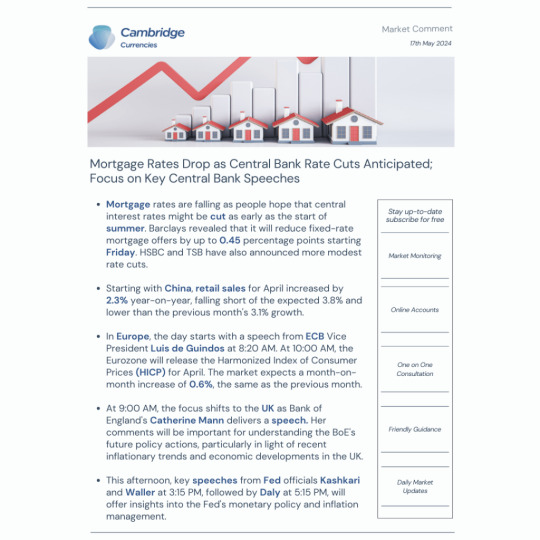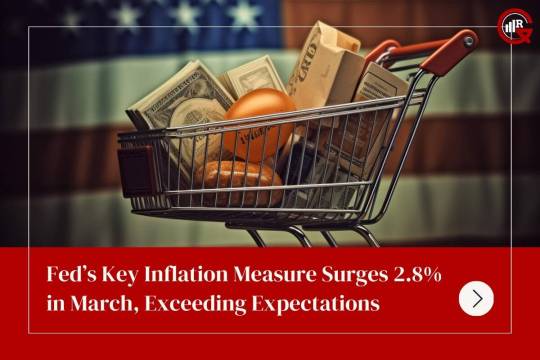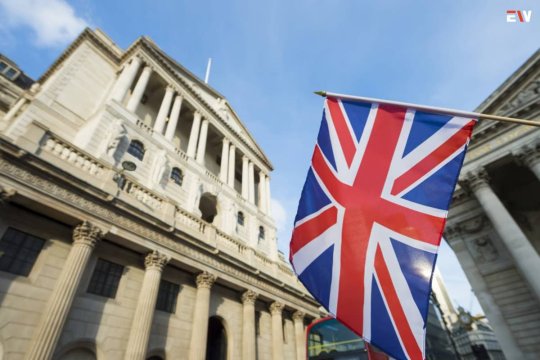#monetarypolicies
Link
#Asianmarkets#Asianshares#GiftNifty#globalrally#Indianstockmarketopenhigher#marketsentiment#monetarypolicies#Nifty#Nifty50#NiftyBank#stockmarket#techstocks#USstockindices#USTreasuryyield#UStreasuryyields
0 notes
Text
youtube
#CBDC#Finance#Cryptocurrency#Fintech#Blockchain#DigitalCurrency#CentralBank#Economics#FutureOfFinance#DigitalEconomy#AI#TechInnovation#FinancialTechnology#MonetaryPolicy#DigitalBanking#CryptoTrends#EconomicInsights#FinancialInnovation#TechTrends#FinancialFuture#youtube#small youtuber#online business#entrepreneur#ecommerce#branding#marketing#accounting#bookkeeping#digitalmarketing
2 notes
·
View notes
Text
Rate Cuts & Focus on Central Bank Speeches

View On WordPress
0 notes
Text
Yen in Crisis: How Japan's Currency Turmoil Could Trigger a Global Economic Storm
https://www.rethinkingthedollar.com/yen-in-crisis-how-japans-currency-turmoil-could-trigger-a-global-economic-storm/
#japaneseyen #monetarypolicy #GlobalEconomy #BankofJapan #USDJPY #EconomicCrisis
0 notes
Text
Fed’s Key Inflation Measure Surges 2.8% In March, Exceeding Expectations

(Source – FX Empire)
In March, inflation maintained its upward trajectory, with a pivotal indicator closely monitored by the Federal Reserve indicating persistent price pressures.
The Commerce Department’s report on Friday revealed that the personal consumption expenditures (PCE) price index, excluding food and energy, surged by 2.8% compared to the previous year. This figure remained consistent with February’s reading, surpassing the Dow Jones consensus estimate of 2.7%.
All-Items PCE Price Gauge
When including food and energy, the all-items PCE price gauge registered a 2.7% increase, slightly higher than the estimated 2.6%.
Despite the inflationary data, market response remained subdued, with Wall Street anticipating an upward opening. Treasury yields experienced a decline, with the benchmark 10-year note standing at 4.67%, marking a decrease of approximately 0.4 percentage points during the session. Futures traders, however, exhibited a slightly more optimistic outlook, elevating the probability of two potential rate cuts this year to 44%, according to the CME Group’s FedWatch gauge.
Consumer Spending and Income
Amidst elevated price levels, consumer spending demonstrated resilience, climbing by 0.8% for the month, slightly surpassing the estimated 0.7%. Personal income also witnessed a rise of 0.5%, aligning with expectations and outpacing February’s 0.3% increase.
However, the report indicated a decline in the personal saving rate to 3.2%, reflecting a decrease of 0.4 percentage points from February and a notable decline of 2 full percentage points from the previous year. This decline suggests that households tapped into their savings to sustain spending levels.
Implications for Monetary Policy
The latest inflation data, coupled with Thursday’s concerning figures, is likely to influence the Federal Reserve’s monetary policy stance. With PCE accelerating at a 3.4% annualized rate in the first quarter, well above GDP growth expectations, the Fed is expected to maintain its current interest rate trajectory at least through the summer unless there is a significant shift in economic data.
Fed’s Inflation Target
The Federal Reserve targets a 2% inflation rate, a threshold that the core PCE measure has surpassed for the past three years. The Fed closely monitors the PCE due to its adjustment for changes in consumer behavior and its emphasis on excluding volatile components such as food and energy prices.
The report highlighted a notable divergence in price trends between services and goods. Services prices increased by 0.4% on the month, while goods experienced a modest uptick of 0.1%. This shift reflects a reversal from earlier pandemic-induced trends, where goods inflation dominated. Food prices exhibited a marginal decline of 0.1%, while energy prices rose by 1.2%.
On a 12-month basis, services prices surged by 4%, contrasting with the minimal movement in goods prices, which increased by just 0.1%. Food prices recorded a 1.5% increase, while energy prices saw a gain of 2.6%.
As inflation persists, the Federal Reserve continues to navigate the complex economic landscape, closely monitoring data trends to inform its policy decisions.
Also Read: Federal Reserve Chair Jerome Powell Cautious on Rate Cuts amid Inflation Concerns
0 notes
Video
youtube
The Currency Conundrum - Exploring the Myth of Wealth Through Printing - Can a country simply print more currency to become wealthy?
Don't miss this insightful exploration of one of the most pressing questions in modern economics!
#Economics Wealth Currency Inflation Debt Productivity Sustainability Policy Documentary Finance GlobalEconomy MonetaryPolicy FiscalPolicy Ce#finance
0 notes
Link
#great recession#recession#2008 financial crisis#2011#liquidity trap#working class#labor#economy#economics#unemployment#fiscalpolicy#fiscal policy#monetarypolicy#monetary policy#federal reserve
0 notes
Text
Why People Oppose CBDCs and the Laws Enacted to Fight Them

Central Bank Digital Currencies (CBDCs) have become a hot topic in the world of finance. These digital currencies, issued by central banks, promise to revolutionize the way we transact. However, they also face significant opposition. This article explores the reasons behind the opposition to CBDCs and the legislative actions taken against them.
What are CBDCs?
CBDCs are digital versions of a country’s fiat currency, issued and regulated by the central bank. Unlike decentralized cryptocurrencies such as Bitcoin, CBDCs are controlled by the government. Countries like China and the Bahamas have already launched their versions of CBDCs, while many others, including the United States, are exploring their potential.
Reasons for Opposition
Privacy Concerns
One of the primary concerns about CBDCs is the potential for government surveillance. Unlike cash transactions, which are anonymous, digital transactions can be tracked. This could allow governments to monitor individuals’ spending habits and financial activities closely. For instance, a government could potentially know what you buy, when you buy it, and where you buy it. This level of surveillance is unsettling for many who value their financial privacy.
Control and Censorship
CBDCs could also give governments unprecedented control over personal finances. They could, for example, freeze accounts or limit what individuals can spend their money on. This level of control raises concerns about potential misuse of power. Imagine a scenario where political dissenters find their access to funds restricted because of their opposition to the government.
Economic Freedom
Opponents of CBDCs argue that they could erode financial autonomy. Decentralized cryptocurrencies like Bitcoin offer an alternative to the traditional financial system, promoting financial freedom and independence. In contrast, CBDCs are seen as a tool for reinforcing governmental control over the economy.
Security Risks
Digital currencies are susceptible to cyber-attacks and fraud. The infrastructure supporting CBDCs would need to be highly secure to prevent hacking and protect users’ funds. Any vulnerabilities in the system could have severe consequences, including financial losses and disruptions in the economy.
Laws and Regulations Against CBDCs
Opposition to CBDCs has led to the introduction of various laws aimed at restricting or prohibiting their use. Several states in the US have taken significant steps in this direction.
State-Level Legislation
South Dakota: Recently passed a law prohibiting the state from accepting CBDCs as payment and blocking participation in CBDC trials.
Indiana, Florida, and Alabama: Between April and June 2023, these states passed laws excluding CBDCs from the definition of money under the Uniform Commercial Code, potentially discouraging business usage.
Oklahoma: Passed a law preventing the state from participating in CBDC trials or using CBDCs.
Federal-Level Legislation
CBDC Anti-Surveillance State Act: In September 2023, the House Financial Services Committee voted in favor of this act, which would prohibit the Federal Reserve from issuing a CBDC directly to individuals or using it for monetary policy. This bill still needs to pass the full House and Senate.
Political Stances: Former President Donald Trump has vowed to block a CBDC if he becomes President again.
Impact of Opposition
The opposition to CBDCs has significant implications for their adoption and implementation. State-level laws and proposed federal bills create substantial hurdles, signaling strong resistance to their rollout. Concerns about financial privacy and government overreach play a crucial role in shaping public opinion and legislative action. If the opposition successfully limits or prevents the rollout of CBDCs, it could influence global approaches to digital currencies.
Conclusion
The debate over CBDCs is far from over. While they promise to modernize the financial system, the concerns about privacy, control, economic freedom, and security cannot be ignored. The laws and regulations against CBDCs reflect a broader political and societal debate about the future of money and financial autonomy. As this debate continues, it is essential to stay informed and engaged with developments in digital currencies.
Call to Action
What are your thoughts on CBDCs? Do you support their implementation, or do you have concerns about their impact? Share your opinions in the comments section below.
For more insights on financial freedom and digital currencies, subscribe to our blog and join the conversation. Don't forget to check out our YouTube channel, Unplugged Financial, where we dive deeper into these topics with in-depth analyses, expert interviews, and practical advice. Join us as we explore the future of money and the potential for a financial revolution!
Subscribe to our blog for the latest articles: Unplugged Financial Blog
Watch our videos and subscribe to our YouTube channel: Unplugged Financial YouTube Channel
Let's learn about the Bitcoin evolution together!
#CentralBankDigitalCurrencies#CBDCs#Bitcoin#FinancialPrivacy#GovernmentSurveillance#DigitalCurrencies#DecentralizedFinance#StateLegislation#FederalLegislation#EconomicFreedom#FinancialAutonomy#CBDCOpposition#DigitalCurrencySecurity#MonetaryPolicy#AntiCBDCLaws#PrivacyConcerns#EconomicControl#DigitalFinancialInfrastructure#Cryptocurrency#FinancialRevolution#financial education#financial empowerment#financial experts#digitalcurrency#blockchain#finance#unplugged financial#globaleconomy
2 notes
·
View notes
Text
youtube
#CBDC#DigitalCurrency#Finance#Fintech#Cryptocurrency#Blockchain#CentralBank#DigitalEconomy#FutureFinance#AI#TechInnovation#Economics#FinancialTechnology#MonetaryPolicy#DigitalBanking#CryptoRevolution#EconomicTrends#FinancialInsights#TechTrends#DigitalTransformation#youtube#small youtuber#online business#entrepreneur#ecommerce#branding#marketing#accounting#bookkeeping#digitalmarketing
0 notes
Text
Bank of England Holds Rates Amid Inflation Dip

Central Bank Signals Potential Cuts as Inflation Eases
In its latest decision, the Bank of England (BoE) opted to maintain interest rates at 5.25%, signaling a potential shift towards rate cuts as inflation dips below expectations. The Monetary Policy Committee (MPC) voted 8-1 to keep rates unchanged, with one member advocating for a 25 basis points reduction to 5%. This decision marks a departure from previous meetings, where two members had favored rate hikes.
Encouraging Signs of Falling Inflation
Bank of England Governor Andrew Bailey cited encouraging signs of decreasing inflation in recent weeks. Headline inflation dropped to 3.4% annually in February, reaching its lowest level since September 2021. Bailey emphasized the need to ensure inflation returns to the 2% target and remains stable before considering rate cuts.
Balancing Act Amid Economic Challenges
The UK economy, having slipped into a technical recession in the final quarter of 2023, faces a delicate balance between reining in inflation and preventing a prolonged downturn. Despite two years of stagnation, the Bank of England aims to navigate this challenge by maintaining a restrictive monetary policy until inflation stabilizes sustainably at the target rate.
Market Interpretation and Expert Analysis
The announcement prompted Sterling’s retreat and a rally in UK bonds, indicating market interpretation as a dovish pivot. Experts suggest that the MPC’s shift reflects cautious optimism regarding future rate cuts, considering factors such as labor market conditions, wage growth, and services inflation.
Suren Thiru, Economics Director at ICAEW, criticized the Bank of England’s cautious approach, urging for timely rate cuts to alleviate economic struggles. Meanwhile, PwC Chief Economist Barret Kupelian emphasized the need for concrete evidence of cooling inflationary pressures before any decisive action.
Global Economies Anticipate Rate Adjustments
Central banks worldwide are poised to declare victory in the battle against inflation after two years of rapid tightening. Following the Swiss National Bank’s rate cut, the Bank of England’s tone has notably softened, with expectations of transatlantic rate cuts by summer.
Hussain Mehdi, Director of Investment Strategy at HSBC Asset Management, anticipates a slow-cutting cycle as central banks adjust rates to stabilize inflation. Despite potential hurdles, such as labor market dynamics and core CPI disparities, experts foresee a gradual easing cycle, culminating in rates around 3%.
As inflation remains elevated compared to the 2010s, HSBC predicts a prolonged period of rate adjustments amidst a fragmented global economy and continued fiscal policy interventions.
In conclusion, the Bank of England’s decision to maintain rates amidst falling inflation signals a cautious yet optimistic approach towards future monetary policy adjustments, as central banks worldwide navigate the complexities of stabilizing economies amid inflationary pressures.
Also Read: Navigating Organizational Success: An In-Depth Exploration of Management Models
#EconomicUpdate#InflationWatch#FederalReserve#bankofengland#MarketAnalysis#MarketTrends#MonetaryPolicy#EconomicAnalysis
0 notes
Link
#books#bookreview#bookreviewer#anshverma#adigestoncryptocurrency#cryptocurrency#business#economics#finance#monetarypolicy#money
0 notes
Link
#Ben Bernanke#federal reserve#monetarypolicy#economics#economic stimulus#GOP obstruction#recession#great recession
0 notes
Text
Navigating the Economic Ship: Central Banks at the Helm 🌊💼
Hey Tumblr fam! Today, let's set sail into the vast waters of economics and explore the crucial role of central banks in regulating the economy. 🚢💰
🏦 The Guardians of Monetary Policy: Central banks, like the Federal Reserve in the U.S. or the European Central Bank, are like the navigators of the economic ship. They steer the course by implementing monetary policies that influence interest rates, money supply, and credit conditions. 📈💳 Their goal? To maintain price stability, promote economic growth, and ensure financial stability.
💸 Controlling the Money Supply: One of the primary tools at a central bank's disposal is controlling the money supply. By adjusting interest rates and buying or selling government securities, they can influence how much money is circulating in the economy. 💵💼 This, in turn, affects borrowing costs, spending, and inflation rates.
📉 Taming the Inflation Dragon: Inflation, like a fire-breathing dragon, can wreak havoc on an economy if left unchecked. Central banks keep a watchful eye on inflation rates and adjust policies accordingly to keep it within target levels. 🐉🔥 They might raise interest rates to cool down an overheating economy or lower them to stimulate growth during periods of low inflation.
📉📈 Cushioning Economic Shocks: During turbulent times, like economic recessions or financial crises, central banks act as the first line of defense. They can provide liquidity to banks, stabilize financial markets, and implement unconventional monetary policies, like quantitative easing, to cushion the blow and kickstart recovery. 🛡️💪
🌍 Global Coordination: In today's interconnected world, central banks often collaborate on a global scale to address common challenges. Whether it's coordinating interest rate policies or sharing insights on economic trends, this cooperation helps maintain stability in the international financial system. 🌐🤝
In essence, central banks play a pivotal role in steering the economic ship through calm waters and stormy seas alike. Their decisions ripple through the economy, shaping the lives of millions. 🌊⚓️ Let's continue to unravel the mysteries of economics together!
#EconomicNavigation#MonetaryPolicy#CentralBanks#finance#payment system#thefinrate#100 days of productivity
0 notes
Text
youtube
#CBDC#DigitalCurrency#Finance#Fintech#Cryptocurrency#Blockchain#CentralBank#DigitalEconomy#FutureFinance#AI#TechInnovation#Economics#FinancialTechnology#MonetaryPolicy#DigitalBanking#CryptoRevolution#EconomicTrends#FinancialInsights#TechTrends#DigitalTransformation#youtube#small youtuber#online business#entrepreneur#ecommerce#branding#marketing#accounting#bookkeeping#digitalmarketing
0 notes
Text
Mastering the Economy: A Deep Dive into Monetary Policy Tools

Mastering the Economy: A Deep Dive into Monetary Policy Tools
Explore the intricacies of monetary policy tools that shape economic landscapes. This comprehensive guide unveils the arsenal of instruments wielded by central banks, deciphering their impact on inflation, interest rates, and overall economic stability.
Unveiling the Dynamics of Monetary Policy Tools
Decoding the Tools that Steer Economies
This article takes a closer look at the various monetary policy tools employed by central banks to influence economic conditions. From interest rates to open market operations, each tool plays a crucial role in navigating the complex waters of monetary policy.
The Central Role of Interest Rates
1. Setting the Benchmark
Interest rates stand as a cornerstone of monetary policy. Central banks use them to regulate borrowing costs, control inflation, and stimulate or cool economic activity. This section dissects how interest rates serve as a pivotal tool in shaping monetary policy.
2. The Dual Mandate: Inflation and Employment
Central banks often have a dual mandate of maintaining stable prices and maximizing employment. Interest rates play a pivotal role in striking a balance between these objectives, aiming for an optimal economic equilibrium.
Open Market Operations: The Art of Buying and Selling Securities
1. Liquidity Management
Open Market Operations (OMO) involve the buying and selling of government securities. By adjusting the supply of money in the market, central banks utilize OMO to manage liquidity, influencing interest rates and overall economic conditions.
2. Controlling the Money Supply
OMO serves as a potent tool to control the money supply. This section explores how central banks employ OMO to regulate the availability of money in the economy, addressing concerns of inflation or economic slowdown.
Reserve Requirements: Shaping Banking Behavior
1. Safeguarding Stability
Reserve requirements dictate the minimum amount of funds banks must keep in reserve. By adjusting these requirements, central banks influence lending and deposit creation, fostering financial stability and control.
2. Balancing Act
This section delves into the delicate balance central banks maintain with reserve requirements, ensuring they are sufficient to secure the financial system while not stifling economic growth.
Forward Guidance: Communicating Intentions
1. Managing Expectations
Forward Guidance involves central banks communicating their future policy intentions. By providing clarity on future actions, central banks influence market expectations, steering economic behavior in desired directions.
2. Enhancing Predictability
This section explores how Forward Guidance enhances predictability in financial markets, influencing investment decisions, consumer behavior, and overall economic activity.
Quantitative Easing (QE): Unconventional Measures
1. Addressing Unprecedented Challenges
In times of economic crises, central banks may resort to Quantitative Easing. This tool involves large-scale asset purchases, injecting money directly into the economy to combat deflationary pressures and spur growth.
2. Evaluating Impact and Risks
The article assesses the impact and risks associated with Quantitative Easing, highlighting its role in addressing extraordinary economic challenges.
The Interplay of Monetary Policy Tools
1. Comprehensive Strategies
This section delves into how central banks strategically combine multiple tools to create comprehensive monetary policy strategies. The interplay of interest rates, open market operations, reserve requirements, Forward Guidance, and Quantitative Easing showcases the complexity of modern monetary policy.
2. Adapting to Economic Conditions
Central banks continuously adapt their monetary policy toolkit based on economic conditions. This dynamic responsiveness ensures that the tools remain effective in achieving stability and growth.
Conclusion: Navigating Economic Frontiers
1. The Art and Science of Monetary Policy
In conclusion, understanding the arsenal of monetary policy tools is crucial for comprehending how central banks navigate economic landscapes. Whether fine-tuning interest rates, managing liquidity through OMO, or resorting to unconventional measures, central banks employ a nuanced blend of tools to steer economies toward stability and prosperity.**
2. Staying Informed for Informed Decisions
As global economic dynamics evolve, staying informed about these monetary policy tools allows individuals, businesses, and policymakers to make more informed decisions, contributing to the overall economic well-being of nations.**
Read the full article
0 notes